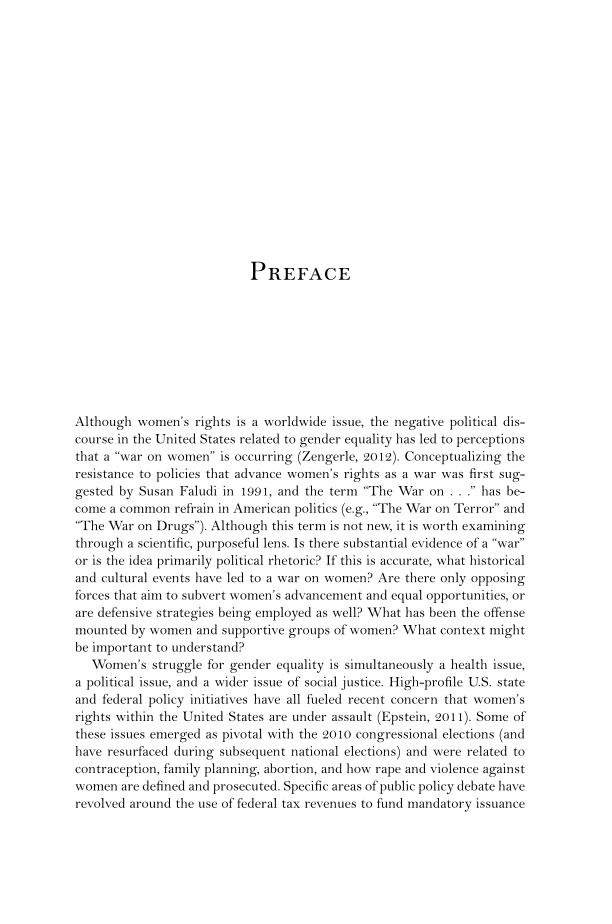Preface Although women’s rights is a worldwide issue, the negative political dis- course in the United States related to gender equality has led to perceptions that a “war on women” is occurring (Zengerle, 2012). Conceptualizing the resistance to policies that advance women’s rights as a war was fi rst sug- gested by Susan Faludi in 1991, and the term “The War on . . .” has be- come a common refrain in American politics (e.g., “The War on Terror” and “The War on Drugs”). Although this term is not new, it is worth examining through a scientifi c, purposeful lens. Is there substantial evidence of a “war” or is the idea primarily political rhetoric? If this is accurate, what historical and cultural events have led to a war on women? Are there only opposing forces that aim to subvert women’s advancement and equal opportunities, or are defensive strategies being employed as well? What has been the offense mounted by women and supportive groups of women? What context might be important to understand? Women’s struggle for gender equality is simultaneously a health issue, a political issue, and a wider issue of social justice. High-profi le U.S. state and federal policy initiatives have all fueled recent concern that women’s rights within the United States are under assault (Epstein, 2011). Some of these issues emerged as pivotal with the 2010 congressional elections (and have resurfaced during subsequent national elections) and were related to contraception, family planning, abortion, and how rape and violence against women are defi ned and prosecuted. Specifi c areas of public policy debate have revolved around the use of federal tax revenues to fund mandatory issuance
Document Details My Account Print multiple pages
Print
You have printed 0 times in the last 24 hours.
Your print count will reset on at .
You may print 0 more time(s) before then.
You may print a maximum of 0 pages at a time.














































































































































































































































































































